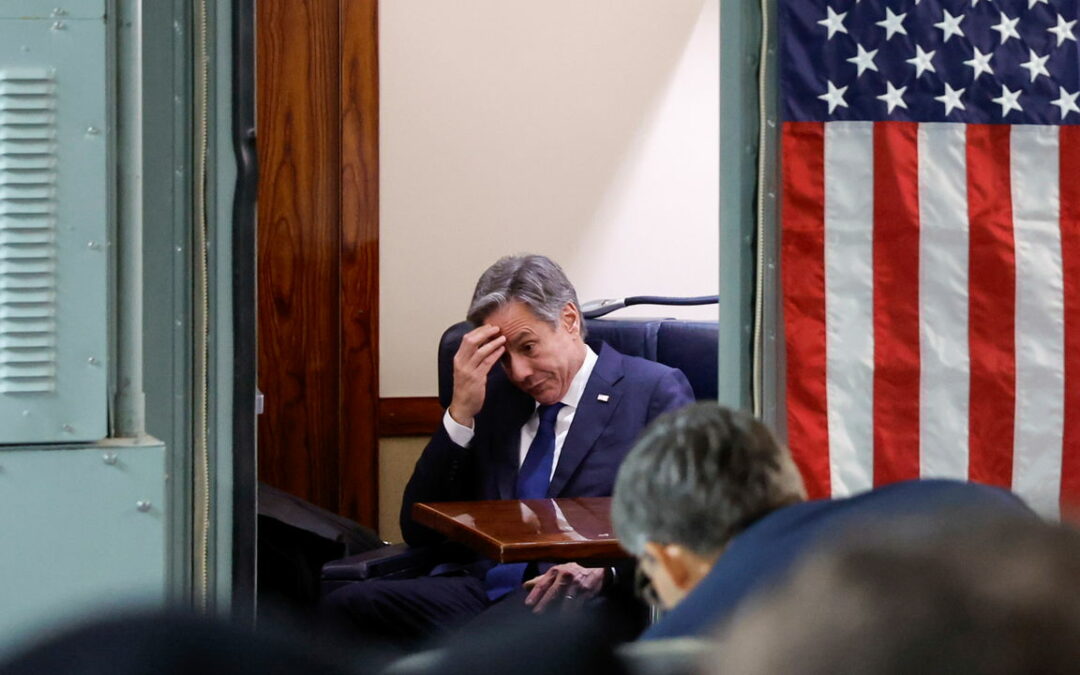AMERICA’S STATE DEPARTMENT has been working overtime since war between Israel and Hamas broke out in October. Antony Blinken, the secretary of state, has travelled twice to the Middle East to emphasise President Joe Biden’s support for Israel and urge the country to act with restraint in its battle against Hamas. But not all American diplomats support their government’s stance. Reports have emerged that State Department staff are drafting documents that criticise the Biden administration’s handling of the war. Politico, a news website, reported that one letter, which is garnering signatures, demands that America support a ceasefire and publicly criticise Israel. Such a “dissent memo” is no ordinary diplomatic cable. Why was the dissent channel created, and how effective has it been in influencing policy?
State Department employees must, strictly speaking, execute policy whether or not they agree with it. If they don’t, the highest-impact way to register their disapproval without jeopardising their jobs is to send a dissent cable, in which they express their reasons for opposing a specific policy. Under the department’s rules, diplomats send such cables to the secretary of state’s planning office in Washington, which must acknowledge receipt and pass them up the chain, including to the secretary. The director of policy planning is expected to reply within 30 to 60 days. Anyone in the department is supposed to be able to use the channel without fear of punishment; rules prohibit retaliation. Like most State Department records, cables are meant for internal use only.
The channel was created in 1971, when morale at the State Department had plummeted as a result of America’s war in Vietnam. In 1968, 266 foreign-service officers resigned in protest against military operations ordered by President Lyndon Johnson, which were often secret. Richard Nixon, who succeeded Johnson in 1969, pledged to conduct the war openly and to “bring dissenters into policy discussions”. He also worried about leaks to the press of diplomatic grumblings and sensitive documents. Reformers within the State Department proposed a dissent channel as a way to placate and manage malcontents. Under Nixon the department adopted it.
The mechanism was quickly put to the test. In April 1971 Archer Blood, consul-general in East Pakistan (which became Bangladesh later that year), sent the first dissent memo. Blood warned that Pakistan’s army was perpetrating genocide against Bengalis in the country, as it fought to prevent East Pakistan from seceding. His memo accused America of failing to condemn the atrocities and the perpetrators. The “Blood Telegram” had little impact, however. Nixon and his secretary of state, Henry Kissinger, saw Pakistan’s leader as their conduit to China and ignored the cable. Blood’s dissent became public. He was demoted.
Since then few if any dissent cables have changed policy. One from 1979, which opposed allowing the brutal Khmer Rouge regime to represent Cambodia at the UN General Assembly, persuaded the secretary of state to change course, but he was talked back around. Another, calling for signs to be posted warning Americans about the dangers of travelling on the Pan-American Highway, was acted upon. Dissent cables did not stop America from invading Iraq in 2003. In January 2017 one opposing an executive order by Donald Trump that banned travel to America from seven Muslim-majority countries attracted more than 1,000 signatures. But it was court challenges, not department policy, that weakened the order. Mr Biden reversed it in 2021.
Hannah Gurman of New York University, the author of “The Dissent Papers”, a book, finds that leaks of cables have become more common. In August 2021 the Wall Street Journal reported that staff at the American embassy in Afghanistan had, in July, sent one warning of the strength of the Taliban and the impending collapse of Kabul. A Republican-led congressional committee investigating the chaotic withdrawal of American troops later subpoenaed the memo, and was eventually allowed to view it.. Mr Blinken worried that the move would have a “chilling effect”. Some diplomats counter, however, that if policy change—not merely blowing off steam—is the goal, a powerful audience is helpful.
In the past few weeks, as news has trickled out about what one official called a “mutiny” at the State Department, Mr Blinken has organised “listening sessions” with employees and underscored the importance of “sustain[ing] and expand[ing] the space for dissent and debate”. He may be sincere. He may also hope, as one creator of the channel put it 50 years ago, to keep dissent “in the house”. ■









